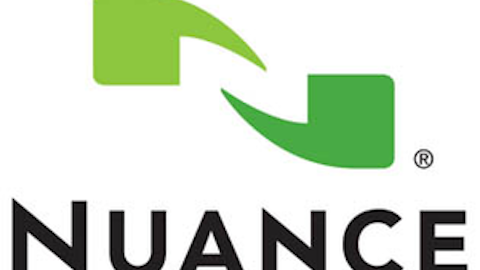The best definition I have ever read of a value trap comes from Investopedia. Investopedia defines a value trap as “a stock that appears to be cheap because the stock has been trading at low multiples of earnings, cash flow or book value for an extended time.”
One of the greatest challenges in investing in Apple Inc. (NASDAQ:AAPL) is that the stock trades at a low valuation, but the price doesn’t reflect the attractiveness of the company. The stock fell by 41.96% from its 52-week high. The decline in valuation was driven by falling margins from its Apple Inc. (NASDAQ:AAPL) iPad Mini paired with the lateness of a product refresh cycle, and a lack of growth in emerging markets.

Apple stock could fall lower
Over at Seeking Alpha, author Brennan Basnicki makes some solid points to sell Apple Inc. (NASDAQ:AAPL), which I will try to summarize with three bullet points.
Low price-to-earnings multiples may not necessarily be a good thing.
Do not buy a stock that is trading below the 200-day moving average.
Avoid stocks that report a decline in earnings growth.
Basnicki repeatedly points to basic principles that have worked for Mark Minervini throughout his trading career and points out that these indicators could be negative for Apple’s stock price.
Let’s start with valuation and growth
At the time of writing, Apple Inc. (NASDAQ:AAPL) trades at a 9.5 price-to-earnings multiple. The prevailing argument is that Apple’s stock is a value trap (looks cheap now but may have even further downside).
However, let’s look at a different indicator because the price-to-earnings multiple doesn’t necessarily tell us nearly enough about the company. The tech sector is known to pay ridiculous premiums for the amount of growth in earnings. The technology sector has a 3.4 price-to-earnings-growth (PEG) ratio on average. In comparison, Apple Inc. (NASDAQ:AAPL) sells at a 0.5 PEG.
The stock is inexpensive based on its PEG ratio. Growth is the most important indicator, and so as long as that stays intact, there’s no reason to think that the stock is a value trap. Sure, it may not generate 70% year-over-year earnings growth, but even back then, the stock never traded at a really high earnings multiple relative to earnings growth.
So to say that a stock is reporting a sequential decline in year-over-year growth, and stating that could be a potential reason for why the stock should be cheap, I could understand that argument. However, the stock seems to be on track. This is based on the 20.88% compounded earnings growth that analysts have projected over the next five years.
I believe it is impractical to expect a decline in demand when considering all of the opportunities to sell Apple Inc. (NASDAQ:AAPL) devices internationally. Apple’s management team has a poor track record of providing guidance. Usually, what happens is that the team points out some reasons for why earnings could miss, and then subsequently report some awkwardly large number. The company’s product portfolio is certainly superior to its competition, and it has a stickier ecosystem than Research In Motion Ltd (NASDAQ:BBRY) and Google Inc (NASDAQ:GOOG).
The 200-day moving average

Source: FreeStockCharts and Alex Cho
Google Inc (NASDAQ:GOOG) fell below its 200-day moving average at one point, before rallying by 50%. Over-generalizations like a stock shouldn’t be bought below the 200-day moving average should be ignored. A good company should be bought regardless of what the trailing price average has been over the past 200 days. The performance of a company is not reflected in its stock price. While it is true that sentiment moves the value of a stock, it is not a representation of its true intrinsic value.
Investors should stick with Google Inc (NASDAQ:GOOG), as the company is projected to grow revenues significantly through the success of its advertising business along with the Android play store. This assumption is backed by analysts on a consensus basis anticipating 41.2% year-over-year growth in sales in the 2013 fiscal year.

Source: FreeStockCharts and Alex Cho
Based on the chart above, a Research In Motion Ltd (NASDAQ:BBRY) investor who bought above the 200-day moving average would have lost money either way. In the end, an investor’s investment thesis should be based on the soundness of the company’s business and whether or not it can sustain growth.
I have mentioned before the significant decline in year-over-year revenues from Research In Motion Ltd (NASDAQ:BBRY)’s device segment, and even went as far as to explain the weakness in the company’s marketing strategies and the shortcomings that could come from depending on an even larger advertising budget. I have repeatedly mentioned that BlackBerry was going to be a poor-performing investment.
I would not buy the stock at these cheaper levels; BlackBerry is the definition of a value trap.
Conclusion
Just because a stock has a lower earnings multiple doesn’t make it a bad investment opportunity. Yes, there are a lot of things that could be better with Apple right now. But until we know the full effects of its next product refresh cycle, we have no clue as to how accurate the management team’s guidance is. The guidance is forcing analysts to project 10% earnings growth for the current fiscal year. However, historically we have seen Apple Inc. (NASDAQ:AAPL) post some truly spectacular numbers after fooling the street with low-balled revenue and earnings guidance.
That being the case, investors should ignore investing based on the 200-day moving average because given enough time, standard rule-based techniques fail in the face of a company’s fundamentals.
The article Is Apple a Value Trap? originally appeared on Fool.com and is written by Alexander Cho.
Alexander Cho has no position in any stocks mentioned. The Motley Fool recommends Apple and Google. The Motley Fool owns shares of Apple and Google. Alexander is a member of The Motley Fool Blog Network — entries represent the personal opinion of the blogger and are not formally edited.
Copyright © 1995 – 2013 The Motley Fool, LLC. All rights reserved. The Motley Fool has a disclosure policy.




